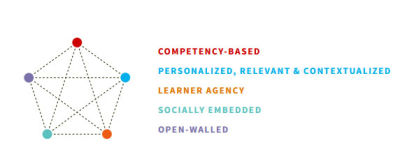Education has long been a hotly debated issue and with good reason -- the policies and actions of education leaders affect our nation’s children, the future of the workforce and the day-to-day lives of families. But the struggle to improve the system has often left advocates in distinct camps, each believing that their solution, whether it be charter schools or blended learning or investing in teachers, is the best way to improve learning. That’s why it’s surprising to see a group of high-profile but strange bedfellows putting forward a new vision for learning, which they're calling Education Reimagined.
The Education Reimagined vision statement comes out of almost two years of meetings where participants from very different sides of the education debate (labor representatives, charter proponents, district folks, business leaders, you name it) convened, left their individual missions and baggage at the door, and indulged in an exercise to imagine what a 21st century education should look like.
“People really wanted to get together to reimagine the fundamental system, recognizing that a whole lot of money has gone into trying to fix the system with no real results,” said Kelly Young, spokesperson for Education Reimagined. The nonprofit organization Convergence facilitated these meetings, helping to create a space of trust between people who have often fiercely disagreed publicly.
“We help people come in as people, not institutions, and they begin to see each other as part of the solution instead of as part of the problem,” Young said. She helped convene and run the meetings with the hope that participants could forge a new path forward for education.
Education Reimagined explains the thinking behind the initiative this way:
“Simply put, the current system was designed in a different era and structured for a different society. Our economy, society, and polity are increasingly at risk from an educational system that does not consistently prepare all children to succeed as adults and is least effective for the children facing the greatest social and economic challenges. Conversely, the Internet revolution has created a once-in-a-generation opportunity for new approaches to learning. Our growing recognition of the importance of skills and dispositions is also sparking a shift toward experiential learning. In short, we see both an imperative for transformation and many promising avenues for re-envisioning the learning experience.”
There are five core elements that Education Reimagined believes are crucial to transforming education:
- Competency-based
- Personalized, Relevant, Contextualized
- Learner Agency
- Socially-Embedded
- Open-Walled
“We have to go to a learner-centered system, where a learner is equipped to have their own agency to decide what their education is going to be like,” said Gisele Huff, executive director of the Jaquelin Hume Foundation. Huff participated in the Convergence sessions and is now on the advisory panel for Education Reimagined. She says the process changed her life. Previously, her foundation invested heavily in blended-learning solutions; now she has a much greater understanding of why and how skills and dispositions augment that work and are a necessary part of teaching the whole child.



